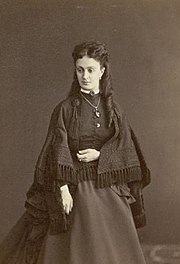Alexander Timashev
On 27 September 1835, he was released from the School and enlisted as a non–commissioned officer in the Izmailovsky Life Guards Regiment, and a year later, on 3 December 1836, he was promoted to sub–ensign.
On 17–18 September of the same year, he took part in his first battle with the highlanders, for which he was awarded the Order of Saint Anne of the 3rd Degree With a Bow.
During these years, with the rank of adjutant wing, he was regularly sent around the empire to carry out various assignments, such as monitoring the progress of recruits, conducting investigations in case of incidents, examining troops affected by the cholera epidemic, and others.
Arriving at the detachment, on 26–27 June, he took part in the battle near the village of Koshno, the attack on Bystritsa and in the pursuit of the Hungarians to Seredfilvo.
On 6 December 1850, Colonel Timashev was appointed to the correcting position of Chief of Staff of the 3rd Reserve Cavalry Corps, with whom he took part in the campaign of 1854–1855 after the start of the Crimean War.
On 16 February 1856, Timashev was instructed to hold a meeting at the Stone Bridge across the Black River with representatives of the Anglo–French troops to agree on the final terms of the armistice and determine the demarcation line.
Not getting along with his immediate superior, the Chief of the Gendarmes, Prince Vasily Dolgorukov, finding him too liberal, and also not agreeing with the basic principles of peasant reform, Timashev submitted a petition to relieve him of his post.
On 28 February 1865, Timashev received permission to leave "to Russia and abroad, until the illness was cured", with the preservation of his salary.
After the death of Count Ivan Tolstoy, on 12 December 1867, Timashev received the post of Minister of Posts and Telegraphs, but already on 9 March 1868, the ministry was abolished, with the inclusion of its departments in the Ministry of Internal Affairs, and Timashev was appointed Minister of Internal Affairs, instead of Peter Valuev.
During Timashev's tenure as Minister of Internal Affairs, a city regulation was introduced in 1870, the transformation of peasant institutions in 1874 was made, the postal part was improved to a large extent, some General Governorships were abolished, the provinces of the Kingdom of Poland were subordinated to the Ministry of Internal Affairs, and the introduction of the Russian language in the Baltic provinces as an official and business language has begun.
He died on 20 January 1893, in Saint Petersburg, was buried at the Nikolskoe Cemetery of the Alexander Nevsky Lavra[1] (according to other sources, in the Tashla Family Estate in the Orenburg Province).
In 1869, he was elected an honorary member of the Academy of Arts, and in 1889, he was awarded the title of academician of sculpture for the bust of Alexander II and statuettes made of terracotta and marble.
According to Mikhail Osorgin, Madame Pashkov "was, if not a beauty in the full sense of the word, then, in any case, a very prominent, attractive person, and, as they said, was the subject of platonic adoration of her cousin Nikolai Mezentsev's entire life".



